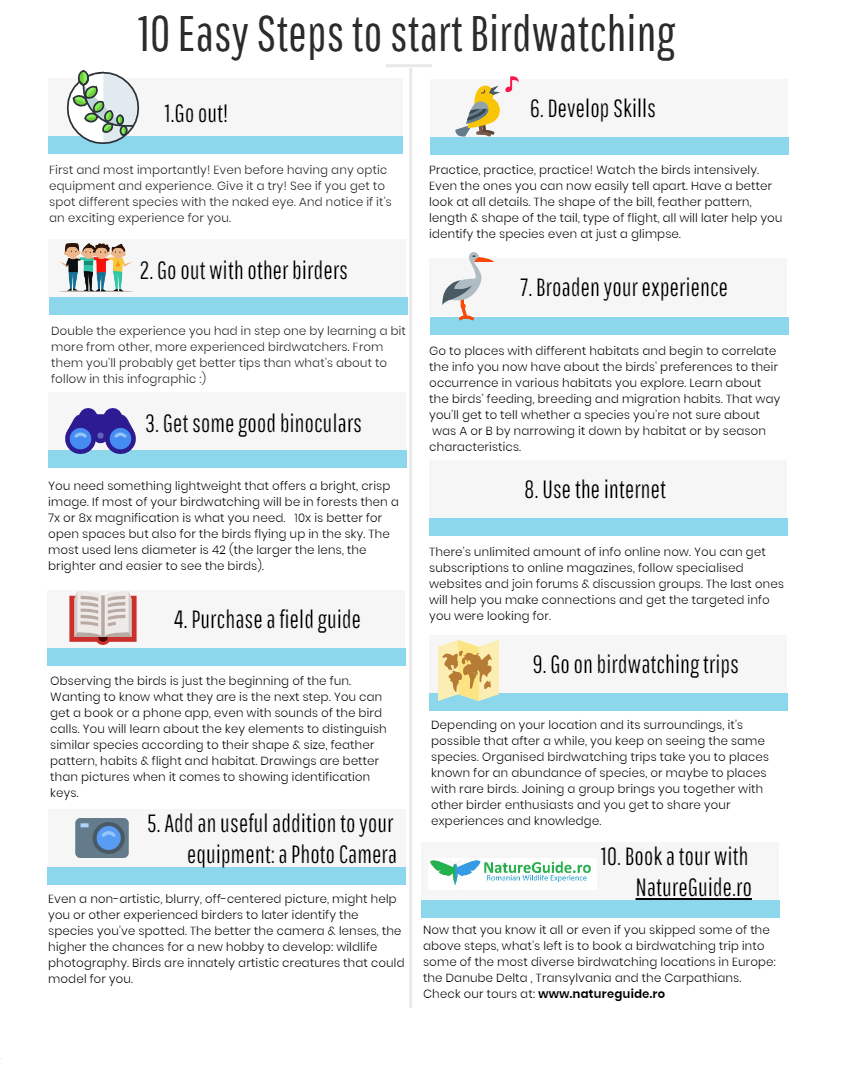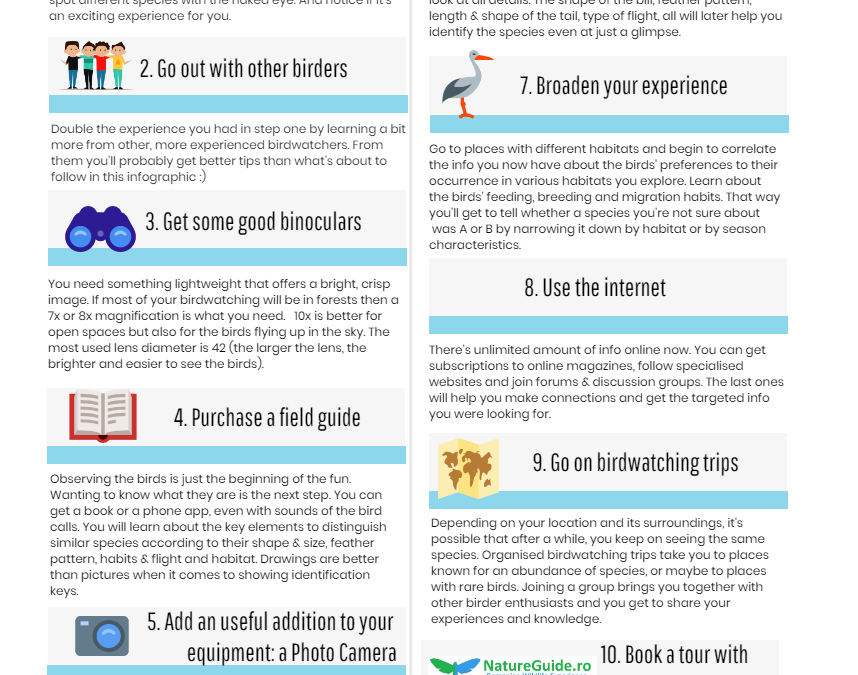Ever wondered what all the birds you see in the park are? Ever thought that there are a lot more species than sparrows, crows, pigeons and hawks? If yes, than birdwatching might be a thing for you. This 10 steps short article can guide you to discover the wonders of nature by birdwatching.
You can start birdwatching anytime you are in nature, maybe you already did but didn’t call it so yet. The term might sound fancy but actually almost anybody can do it. Nature itself can be your first guide to birdwatching by simply inspiring you to want to find out more about it.
Let’s see the 10 steps that guide you to start birdwatching out in nature:
1.Go out! Nature is waiting for you
First and most important! Even before having any optic equipment and experience. Give it a try! See if you get to spot different species in nature with the naked eye. And notice if it’s an exciting experience for you.
2.Go out with other birders
Double the experience you had in step one by learning a bit more from other, more experienced birdwatchers. From them, you’ll probably get better tips than what’s about to follow in this infographic :). An experienced birdwatcher can be the best guide
3.Get some good binoculars
With so many brands and models, there’s a lot to choose from according to your budget. You need something lightweight that offers a bright, crisp image. If most of your birdwatching will be in forests then a 7x or 8x magnification is what you need. 10x is better for open spaces but also for the birds flying up in the sky. The most used lens diameter is 42 (the larger the lens, the brighter and easier to see the birds). If your budget allows it, you can look for further characteristics like: lens coating (ED/EL/HighLux/AquaDura etc.), argon-purged-chamber, lifetime warranty and other details.
4.Purchase a field guide
Observing the birds is just the beginning of the fun. Wanting to know what they are is the next step. You can get a book or a phone app, even with sounds of the bird calls. You will learn about the key elements to distinguish similar species according to their shape & size, feather pattern, habits & flight and habitat. Drawings are better than pictures when it comes to showing identification keys.
5. Add a useful addition to your equipment: a Photo Camera
Even a non-artistic, blurry, off-centred picture, might help you or other experienced birders to later identify the species you’ve spotted. The better the camera & lenses, the higher the chances for a new hobby to develop: wildlife photography. Birds are innately artistic creatures that could model for you.
6.Develop Skills
Practice, practice, practice! Watch the birds intensively. Even the ones you can now easily tell apart. Have a better look at all details. The shape of the bill, feather pattern, length & shape of the tail, type of flight, all will later help you identify the species even at just a glimpse.
7.Broaden your experience
Go to places with different habitats and begin to correlate the info you now have about the birds’ preferences to their occurrence in various habitats you explore. Learn about the birds’ feeding, breeding and migration habits. That way, you’ll get to tell whether a species you’re not sure about was A or B by narrowing it down by habitat or by season characteristics.
8.Use the internet
There’s an unlimited amount of info online now. You can get subscriptions to online magazines, follow specialised websites and join forums & discussion groups. The last ones will help you make connections and get the targeted info you were looking for.
9.Go on birdwatching trips
Depending on your location and its surroundings, it’s possible that after a while, you keep on seeing the same species. Organised birdwatching trips take you to places known for an abundance of species, or maybe to places with rare birds. Joining a group brings you together with other birder enthusiasts and you get to share your experiences and knowledge.
10.Book a tour with Nature Guide .ro
Now that you know it all or even if you skipped some of the above steps, what’s left is to book a birdwatching trip into some of the most diverse birdwatching locations in Europe: the Danube Delta, Transylvania and the Carpathians. Check our tours at: www.natureguide.ro
Check out our birdwatching tours


